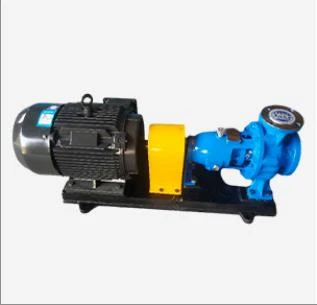English
- Afrikaans
- Albanian
- Amharic
- Arabic
- Armenian
- Azerbaijani
- Basque
- Belarusian
- Bengali
- Bosnian
- Bulgarian
- Catalan
- Cebuano
- Corsican
- Croatian
- Czech
- Danish
- Dutch
- English
- Esperanto
- Estonian
- Finnish
- French
- Frisian
- Galician
- Georgian
- German
- Greek
- Gujarati
- Haitian Creole
- hausa
- hawaiian
- Hebrew
- Hindi
- Miao
- Hungarian
- Icelandic
- igbo
- Indonesian
- irish
- Italian
- Japanese
- Javanese
- Kannada
- kazakh
- Khmer
- Rwandese
- Korean
- Kurdish
- Kyrgyz
- Lao
- Latin
- Latvian
- Lithuanian
- Luxembourgish
- Macedonian
- Malgashi
- Malay
- Malayalam
- Maltese
- Maori
- Marathi
- Mongolian
- Myanmar
- Nepali
- Norwegian
- Norwegian
- Occitan
- Pashto
- Persian
- Polish
- Portuguese
- Punjabi
- Romanian
- Russian
- Samoan
- Scottish Gaelic
- Serbian
- Sesotho
- Shona
- Sindhi
- Sinhala
- Slovak
- Slovenian
- Somali
- Spanish
- Sundanese
- Swahili
- Swedish
- Tagalog
- Tajik
- Tamil
- Tatar
- Telugu
- Thai
- Turkish
- Turkmen
- Ukrainian
- Urdu
- Uighur
- Uzbek
- Vietnamese
- Welsh
- Bantu
- Yiddish
- Yoruba
- Zulu
Telephone: +86 13120555503
Email: frank@cypump.com
Nov . 30, 2024 18:27 Back to list
Exploring the Efficiency and Benefits of Submersible Water Pumps in Various Applications
Understanding Submersible Pumps The Essential Tools for Water Management
In the realm of fluid dynamics and water management, the submersible pump stands out as a crucial device. Its ability to operate underwater makes it ideal for a multitude of applications, ranging from residential tasks to industrial processes. In this article, we will explore what submersible pumps are, how they work, their applications, and their benefits.
What is a Submersible Pump?
A submersible pump is designed to be fully submerged in the fluid it is pumping. This type of pump is sealed, preventing water from entering its motor and causing damage. Because they are submerged, these pumps don't require a lot of suction, making them efficient for moving water vertically to the surface.
The basic components of a submersible pump include the motor, the impeller, and the discharge lines. The motor drives the impeller, which moves water through the pump and out through the discharge pipe. The design of submersible pumps allows them to be less vulnerable to cavitation, a common problem in traditional pumps that can lead to decreased efficiency and increased wear.
How Do Submersible Pumps Work?
Submersible pumps operate based on principles of pressure and buoyancy. When placed in water, the pump's motor generates energy that causes the impeller blades to spin rapidly. This spinning motion creates a low-pressure zone at the center, drawing water into the pump. The impeller then forces the water upward through the discharge pipe, allowing it to reach surface levels efficiently.
The pump is equipped with a series of seals and protective casings that prevent water from entering the motor casing, thus prolonging the life of the pump and maintaining its efficiency. Submersible pumps can be powered by electricity, diesel, or other energy sources, making them versatile for various applications.
Applications of Submersible Pumps
Submersible pumps have a wide range of applications, which can be categorized into residential, industrial, and agricultural uses
1. Residential Use Homeowners often use submersible pumps for sump systems, which help remove water that accumulates in basements or crawl spaces. They are also prevalent in wells, where they bring drinking water to the surface.
submersible pump water

2. Industrial Applications Industries utilize submersible pumps for dewatering, in wastewater treatment facilities, and for various cooling processes. Their ability to handle large volumes of water makes them ideal for construction sites and mining operations.
3. Agricultural Uses Farmers use submersible pumps to irrigate crops by accessing groundwater. These pumps can draw water from deep wells and provide consistent irrigation, essential for enhancing crop yield and efficiency.
Benefits of Submersible Pumps
Submersible pumps offer numerous advantages, making them a preferred choice for many applications
- Efficiency Their ability to work while submerged reduces the energy needed for suction, which often translates into lower energy costs. - Space-Saving Design Since they are installed below the waterline, they take up less space than above-ground pumps, making the overall system design simpler and less obtrusive.
- Durability Built to withstand harsh conditions, submersible pumps are often resistant to corrosion and can last for many years with proper maintenance.
- Reduced Noise Operating underwater reduces the noise level compared to traditional above-ground pumps, making them ideal for residential areas.
- Versatility With different sizes and designs, these pumps can be customized for various needs, whether for shallow or deep well pumping.
Conclusion
Submersible pumps are indispensable tools in modern water management practices. Their unique design allows for efficient water movement in various applications, from home use to industrial needs. As technology continues to advance, the performance and capabilities of submersible pumps will only improve, further establishing their importance in fluid dynamics and resource management. Whether for irrigation, dewatering, or ensuring a dry foundation, submersible pumps remain a trusted solution in managing water efficiently.
-
Heavy-Duty Mining Sludge Pumps - Wear-Resistant Slurry Handling
NewsAug.02,2025
-
Horizontal Split Case Pump with GPT-4 Turbo | High Efficiency
NewsAug.01,2025
-
ISG Series Pipeline Pump - Chi Yuan Pumps | High Efficiency, Durable Design
NewsAug.01,2025
-
Advanced Flue Gas Desulfurization Pump with GPT-4 Turbo | Durable & Efficient
NewsJul.31,2025
-
ISG Series Vertical Pipeline Pump - Chi Yuan Pumps | Advanced Hydraulic Design&Durable Construction
NewsJul.31,2025
-
ISG Series Vertical Pipeline Pump - Chi Yuan Pumps | Energy Efficient & Low Noise
NewsJul.31,2025










